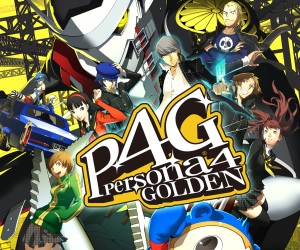 Game: Persona 4 Golden
Game: Persona 4 Golden
Developer: Atlus
Publishers: Atlus (NA), NIS America (EU)
Available on: PlayStation Vita only
We are barely months into a new year, and already we have something of an RPG renaissance on our hands. With Ni No Kuni having reinvigorated the 16-bit style role-player with incredible panache, Atlus now seek to accomplish two goals with this release: to give the PS Vita a kick up the arse, games-catalogue-wise, and to unleash the ultimate incarnation of their excellent Persona series for Western audiences.
Persona, for the uninitiated, is a spinoff from the long-running Megami Tensei franchise that has been a Japanese rpg staple since the MSX and Famicom days. Even if you haven’t heard of it, the devil-summoning Megami Tensei series sits behind only Final Fantasy and Dragon Quest in the J-popularity stakes. Unlike the Megami titles, which are usually set in a fantasy demonic realm, Persona often translates the fantastical summon monster scenario to a setting grounded more in reality, and deals with young adults confronting incredible situations using their Persona – spiritual manifestations that can be used in combat the same way as a Pokemon or the celestial Tarot beings from Arcana Heart. As the series progressed, Atlus began to incorporate elements of life sims into the equation, lending the role-playing action a unique feel and unparalleled depth, genuinely evolving the genre in the process. Persona 4 is the latest – and finest – instalment in the series, arriving to universal acclaim on the PlayStation 2 in 2008. Persona 4 Golden is an enhanced Vita port of that game.
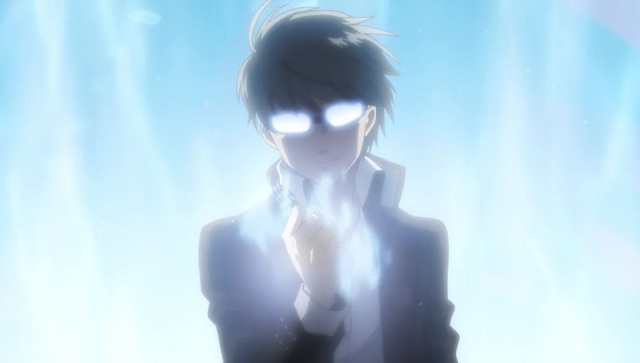
STORY: Unlike previous Persona titles, which tend to be based around larger city environments, Persona 4 revolves around a more idyllic country setting, with the high-school-aged protagonist moving to the village of Inaba to live with his uncle and younger cousin whilst his parents are working abroad. Quite simply, Inaba is no ordinary country bolt-hole – it is packed with unusual oddball characters, all going about their own routines and with their own distinctive foibles and characteristics. There is Uncle Ryotaro Dojima, a hard boiled, overworked detective who is effectively allowing the television set to raise his old-before-her-time daughter Nanako; Kanji Tatsumi, a punk-styled teen tearaway who is a veritable maelstrom of confusion and teenage angst; Naoto, a female detective forced to act as a man in order to avoid discrimination; and Rise, a fallen teen idol relocated to the sticks as a reluctant transfer student. There is a huge cast to interact with or add to your party. Add into the mix other oddities like an incredibly foul-mouthed teacher, sinister hunchback Igor and oddly unsettling anthropomorphic bear-toy, Teddie, and you have a very interesting setting that’s hardly your run of the mill RPG fantasy land.
Life in Inaba begins with you establishing some social connections, making friends and visiting the shops – pretty standard stuff for a teenager upping sticks to a new place – however, your life in Inaba takes a sinister turn when people start getting murdered, and the cops are unable to identify the culprit. In the midst of the confusion, a frantic Ryotaro even tries to pin the blame on you, dragging you into a complex and labyrinthine whodunit. The teens of Inaba join forces and uncover a plot involving the mysterious Midnight Channel – a late-night television show that sucks viewers into an otherwordly realm populated by malevolent beings known as Shadows. Your protagonist teams up with peppy kung-fu tomboy Chie, likeable lad Yosuke and the enigmatic Yukiko to form the Investigation Team – an alliance dedicated to solving this horrible mystery. Unlike your average UK teenagers, who are more interested in staying in bed all day, energy drinks, Instagram and Skrillex, the denizens of Inaba are far better equipped to track down off-world, telly-dwelling serial murderers thanks to their Personae. The game juxtaposes mundane daily life – attending school, managing a social calendar, forming relationships and all of the minutae of living – with this fantastical, very dangerous televisual world, in which dungeon crawling and insane boss battles are the norm.
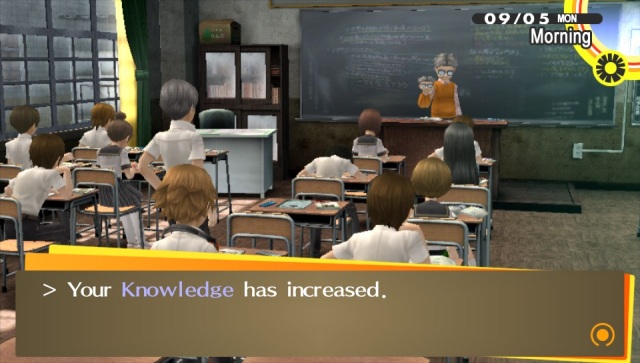
Despite the flourishes of humour and depictions of teen drama, your adventures are far more than just J-pop-infused whimsy. There is a brooding sense of malevolence and danger: an early cutscene depicts the horrific sight of a body hanging lifelessly from a telegraph pole, hogtied and fashioned into a nightmarish diorama. It’s a jarring spectacle to say the least. The daily routine in Inaba is underpinned with an incredible sense of teen angst and melancholy, perhaps more so than any other game I can think of. There are kids here that are neglected, cast aside or ignored by the adults in their lives, who unite during the witching hour to embark on their secret, potentially world-saving missions with their Personae – exaggerated extensions of their personalities – helping them to win the day.
GRAPHICS: Visually, this is a superb HD re-imagining of the PlayStation 2 original, which was no slouch in the first place. Everything has been given a new lick of paint, meaning that Inaba really comes to life on the OLED screen, whether you are trudging along in the teeming rain on a grey and miserable day, or entering one of the many bright, colourful dungeons or settings once you enter bonkers TV Land. There are some stunning anime-style cutscenes, and the static talking heads that pop up during dialogue are beautifully designed and very much classic Atlus – anyone who has played Trauma Centre will be instantly familiar with the style. Persona has always had a dazzling bestiary that is a refreshing change from the normal RPG tropes – so don’t expect to find any Marlboros, Cactuars or Slimes here – there are some wildly inventive creations on display once you instigate combat by touching one of the No-Face (one for the Miyazaki fans amongst you) style Shadows you encounter when dungeon crawling. Sword wielding marionettes, malevolent slabs of stone wearing masquerade masks, sinister babies sprouting flowers from their heads, and the incredibly irritating Hand creatures are just some of the expertly-realised denizens you will meet and have to take down along the course of your journey.
SOUND: Shoji Meguro is synonymous with the Megami/Persona series and has been around since day dot, providing his expert musical compositions to compliment the action. The Persona 4 soundtrack is excellent. Meguro has really weaved his magic here with colleague Atsushi Kitajoh, providing perfect musical accompaniment to each and every facet of the game. From the classic Persona “Aria of the Soul” theme which is immediately recognisable when you are in the Velvet Room, to the selection of hi-octane, extremely catchy pop and rock numbers – many of which are handled by vocalist Shihoko Hirata, there is something for everyone here. “Reach Out To the Truth”, the stock battle sequence tune, is a particular highlight – and it is no surprise to hear that the Japanese public went crazy for the original OST release. Golden features some brand new compositions – and also has the distinction of featuring lyrics penned by a chap called Benjamin Franklin, which made me chuckle.
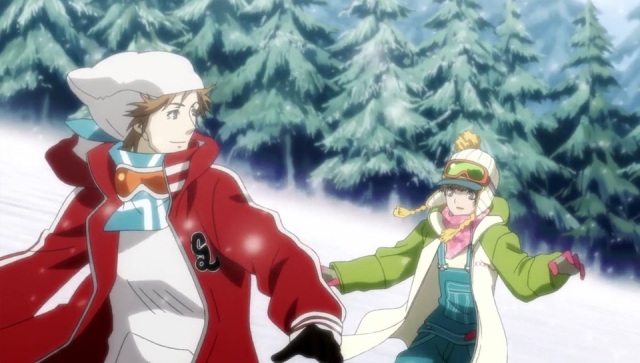
Voice acting can often be a bugbear in the localisation process, and while the Americanised voices here are perfectly adequate (and to be fair there is plenty of top-class swearing), I am sure I am not alone in wishing that the original Japanese voice tracks had been included. Thankfully you can switch the voices off and the subtitles are excellent.
GAMEPLAY: Simply describing P4G as a role playing game would do it a huge injustice. There are stock dungeon-crawling elements to the gameplay that are shared with umpteen other games (the battles are turn based, and come with all of the status alterations, elemental attacks and HP/MP malarkey you have seen a squillion times before), but what makes it truly special is the way the game is structured, and the way you have to structure how you play the game. Like some of the other terrific games we have looked at recently (The Walking Dead and Virtue’s Last Reward spring to mind) the choices you make in your interactions with other characters alter your destiny within the game. No two playthroughs of P4G will be the same – and not just because of the randomly generated dungeon layouts, either.
You see, the game plays out across a full, 365-day year – which accurately simulates the terms of a real Japanese school year. When you’re not kicking arse inside a dungeon, you have to play through each day, with the days split into sections which you can fill in a variety of ways. Most obviously you have to attend school and although it isn’t in real time and you see snippets of the lessons themselves (and even get asked pop-quiz style questions by your teachers which raise your stats if answered correctly!), most days revolve around what you get up to before and after school. Some activities can only be undertaken at certain times of day, on certain days of the week or even during certain types of weather.
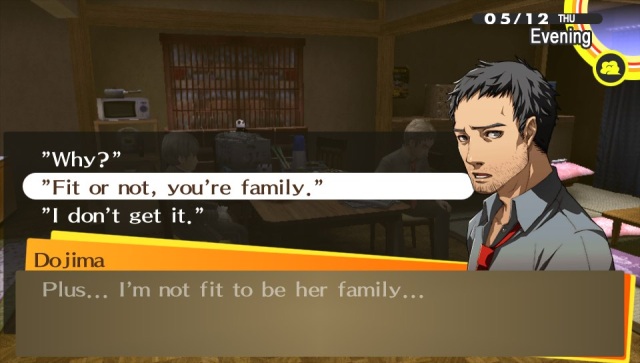
Once the game really kicks in, the scope of what you can get up to is staggering. You can get a part time job, or engage in a selection of extracurricular activities like sports and clubs. But the crux of the game – the heart and soul of what makes it so unique – is the use of Social Links and how your relationships change the course of the game. Spending time with people will forge Social Links between you and that individual, and your five upgradeable attributes also play an important role in the process. Understanding, Diligence, Courage, Knowledge and Expression can all be raised by performing the requisite tasks or actions. Your Knowledge, for example, can be raised by answering a question in class correctly, whereas Diligence can be maxed out through taking on various jobs, or by reading certain books you can purchase from the bookstore. Your attributes affect what you can do and where you can go. Early on, for example, your Courage is too low to do something as audacious as ask for a girl’s phone number, or even enter a spooky shrine at night – but you can get up to all manner of extracurricular activities (jobs, fishing, swimming, riding your scooter, spending time with stray animals), all of which can raise your stats or help you work towards tightening up those important Social Links. It is a clever and well-judged way of improving your stats steadily as the game progresses. Sure, you can also take the standard RPG route of re-entering dungeons to grind your way towards higher stats and abilities – but Persona 4 is generous enough to give you almost infinite ways to improve your characters.
Developing strong Social Links allows you create and upgrade more powerful Personas to use in battle. It will also see you rapidly build a circle of trusted friends, which can lead to its own benefits, or even help you to obtain yourself a significant other. In other words the game tries to simulate the things that are important to a real-life teenager – with the addition of bonkers monster-on-monster combat. Everything is expertly interwoven to the point that you actually take it for granted once you immerse yourself in the day to day activities of living in Inaba, nipping out in the evening for a bit of patrolling dungeons and attempting to save the next murder victim. If you want to be led by the hand then this game isn’t for you – however Atlus have used the magical powers of the internet to offer a genius hint system that kind of helps in this regard. If you find yourself stuck for how to spend your time or what to do next, you can tap the “VOICE” icon at the top of the screen and your Vita will connect to the PlayStation Network and then bring up a list of speech bubbles that tell you what the most popular choice of activity has been for a multitude of other users. It may not be as specific as telling you what to do, but it certainly gave me a few ideas – particularly early doors – as to what I could best occupy my downtime with. The network features also stretch to dungeon sections, where you can send out a desperate “SOS” to other players online who can offer encouraging messages. I didn’t resort to this, I am pleased to say.
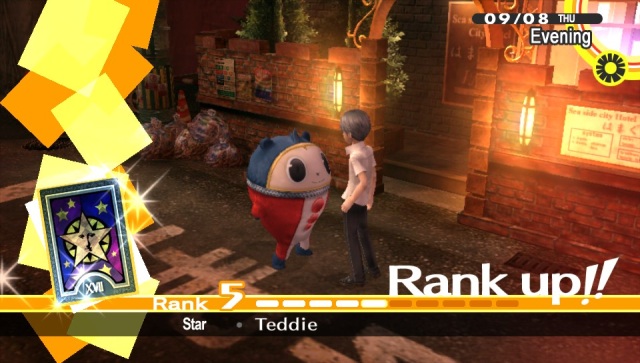
Using the time in between your dungeon sorties is key to how you will fare once you get inside them. Essentially, the many social activities and pursuits you undertake are ways of levelling up to prepare you for the challenges of combat. You only get a certain number of days before each victim needs to be rescued – and failing to conquer a dungeon within the allotted time will lead to a Game Over screen. It says a lot that these day to day sections are just as interesting and compulsive as the action bits – but that isn’t to say that the battle system isn’t excellent and just as strong. Each dungeon is “themed” in that it relates to the individual you’re attempting to save from within the Midnight Channel and the clutches of the nefarious Shadows. You work your way through dungeons floor by floor, defeating the enemies and seeking out treasure chests along the way. Occasionally you will encounter rare monsters who, when defeated, may drop rare and unusual items, and waiting for you at the end of each dungeon is a boss. You are able to quit out of a dungeon if you wish (usually once you realise you are ill-equipped to take down the monsters therein) by purchasing an item that allows you to do so.
Combat is turn-based and follows a familiar J-RPG template. You can assign commands to your party members instructing them how to behave in battle, and everything is very simple to negotiate thanks to bold, bright yellow menu screens that clearly outline what everything means. You can analyse any foes you encounter – without costing you a turn – which is very useful, and of course there are all the spells, attacks, items and other standard fare you would expect. New to the Vita port is the group assault mechanic – if all of the enemies in a particular battle are stunned and knocked to the deck, you can trigger a powerful attack where your whole crew will go in mob-handed and give the enemies a good beating.
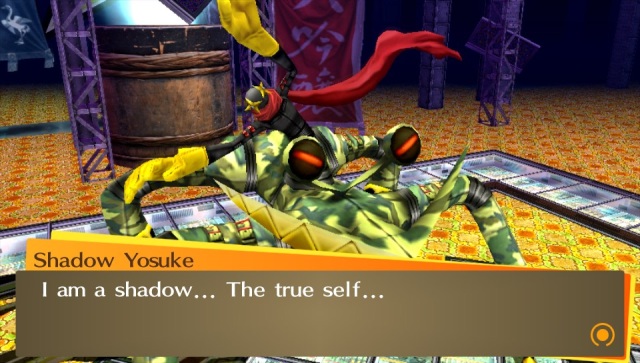
Like any good role player, winning a battle will earn you experience points and money, but here, depending on certain conditions (usually defeating an adversary without taking damage) you are rewarded with Shuffle Time, where you get to select from a range of randomly-generated tarot-style cards. Sometimes a card will have a positive effect – such as allowing you to learn and absorb new Persona types, regenerate health or obtain new skills – but they can also have detrimental effects like halving the cash earned from winning a fight. Sometimes, you are able to draw more than one card at a time but only if you take the negative effects of a card that allows you to do so. So you enter into something of a risk/reward scenario at times – and it soon becomes incredibly compulsive.
Once you gain Persona cards and start to make those crucial Social Links happen, you can visit the Velvet Room and use Fusion techniques to make new, outlandish creations. This being Persona, it’s not just a simple case of mixing stuff together – different combinations of Persona types can fuse with different results depending on factors such as the day of the week and the weather. You can, with the use of Skill Cards and picking the perfect day and Social Link-aligned Persona types, create just about any type of Persona you need. Your avatar can then use these new Personas in combat, each different Persona having access to its own sub-menu of magic spells and physical attacks. The rest of your party all have their own predetermined Persona, which they cannot change but develop and level up in battle, learning new techniques along the way. Each character has predisposed skill set and eight slots in which to place spells, attacks and other abilities. Yukiko is a natural healer with a mean fire-based attack, whereas Chie can dish out some heavy physical punishment and get busy with frosty ice attacks. You will soon learn how to choose the right party for each situation, and will be juggling Personas in battle like nobody’s business.
LONGEVITY: Persona 4 Golden is an absolutely huge game. Simply tinkering around with the Persona on offer or steadfastly building your social standing can eat hours of your time, and dungeon-crawling is actually fun rather than a mundane grind. There are literally hundreds of hours of gameplay in this tiny game card, all underpinned by a brilliant storyline that keeps you guessing all the way.
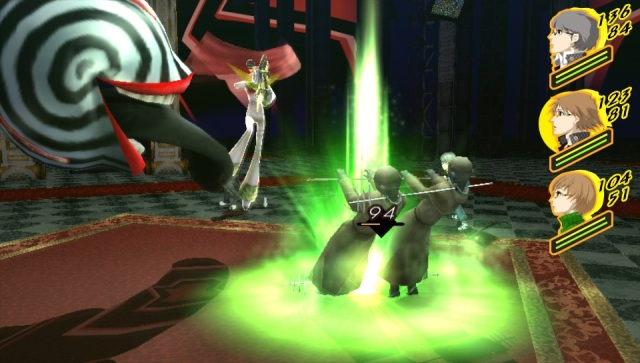
VERDICT: Persona 4 Golden is the best reason to own a PlayStation Vita right now. This is the definitive game in the franchise, improved upon subtly and perfectly suited to handheld gaming. Atlus have taken the PlayStation 2 original, added some brilliantly unobtrusive extras, increased the number of Persona to find, and added an extra character in Marie, who comes with her own fascinating Social Link that fits right in with the game.
The sheer scope of what has been achieved here is such that you wonder how you are not simply overwhelmed and intimidated as a gamer at the prospect of playing it. But the reality is, the design and structuring is flawless and the slow-burn manner in which you are introduced to the world puts you at complete ease; as such the whole experience is an absolute pleasure from start to finish. Not just one of the best role playing games of the year, but one of the best ever made.







